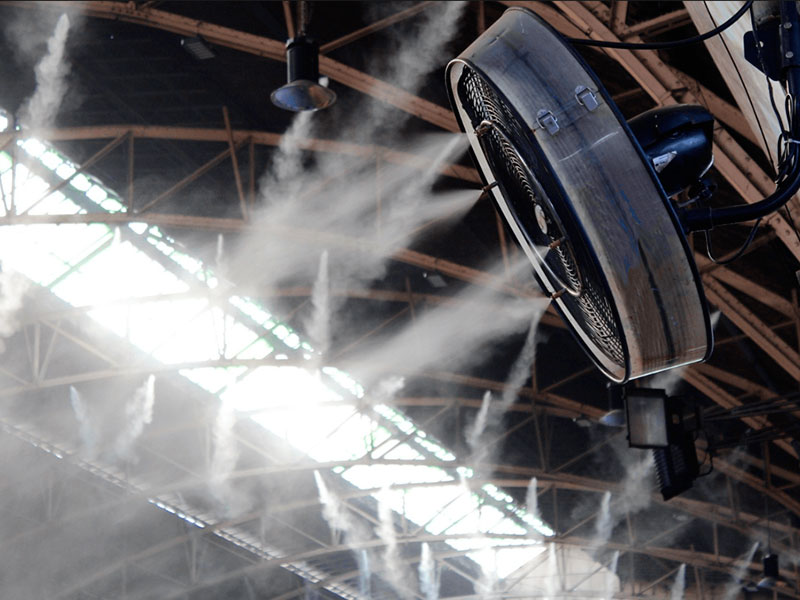Some aspects and factors determine the efficiency of systems and machinery in an industrialized or commercial environment. One of them is the aspect of ventilation and air conditioning. Not taking into account the incident factors in this type of system can lead to significant energy and monetary costs for anyone. This is without sacrificing the necessary thermal comfort for workers and civilians in a given complex.
A fundamental issue to always keep in mind is the amount of fresh air renewal per hour. This is adjusted in the flows of natural and mechanical ventilation, driven by fans, extractors, or the same large equipment called a ‘chiller’. But what about other technology adaptable to large systems, even with the ability to fully integrate with them?
Dehumidification through desiccants, and humidification through humidifiers, is an air conditioning solution today, and with an eye to the future. It is a technology that, in addition to promoting unparalleled energy savings, also provides the necessary thermal comfort and even provides levels of environmental purification, for more breathable air quality for people.
Just as it is necessary to take into account the structural dimensions of an industrial warehouse, its nature of work, and the architectural design itself, to plan and execute the best air conditioning installation, and discern the air flows in ventilation, it must also be taken into account. into account when adapting special technology.
For example, the versatility of a humidifier or desiccant, in a certain area of heat stress, could be more cost-effective than the more robust conventional air conditioning equipment. In the long run, industrial humidification or nebulization would lead to more energy efficiency, with the same thermal comfort results, or even better. As mentioned, the architectural design of the complex must be taken into account, to ensure that there are no obstructions that put at risk the proper functioning of the air conditioning devices.
The calculation variables, which can also be understood as essential factors for the planning and installation of an HVAC with humidification and drying modality, will consist of:
- Number of workers and traffic in the area. Because in addition to the workforce, other people who circulate through a certain industrial or commercial area are also involved.
- Nature of operations or labor activities. In other words, the needs of those areas that work with high levels of thermal stress will be very different from those of administrative offices. In workshops where work is carried out with high heat indexes, or in areas where paints or special substances are handled, you must have other air conditioning conditions, with direct inclusion of humidifiers, and desiccants, among others.
Concentration of contamination or substances. Also, in certain areas, a more constant and frequent air renewal is needed than in others. The flows must go according to the type of area in the industry or commercial zones.
Also, if you are directly dealing with specific swarming particles, such as silica, metal, glass, or even asbestos, then not only air conditioning installation, but also purifiers should be planned to deal with these kinds of damaging factors. Precisely the nebulizer systems or mist generators are for that.
The full use of industrial air conditioning, including humidification and drying, is a matter of safety and economy, to promote the best microclimatic conditions in all types of environments, whether large or small. In fact, in small manufacturing and warehouse facilities, only 10 air changes per hour are required, but it may be more depending on the internal pollution generated, or the incidence of external pollution towards internal facilities. At least in small and medium complexes, with a simple but effective air conditioning system and portable humidifiers, it would be enough. In larger installations, the air renewal flow rates will increase considerably, to try to cover larger areas.
Be that as it may, you always have to try to choose the best systems for air conditioning, and diversify in the different technologies, depending on the needs of each place. In some, a lot of ventilation and extraction will be needed, while in others, pure humidification or drying will suffice to obtain the best breathable environment.




